#tabletop gamers
Explore tagged Tumblr posts
Text
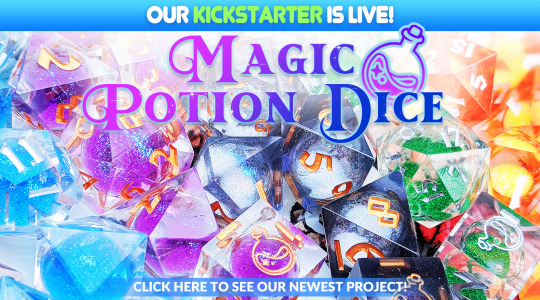
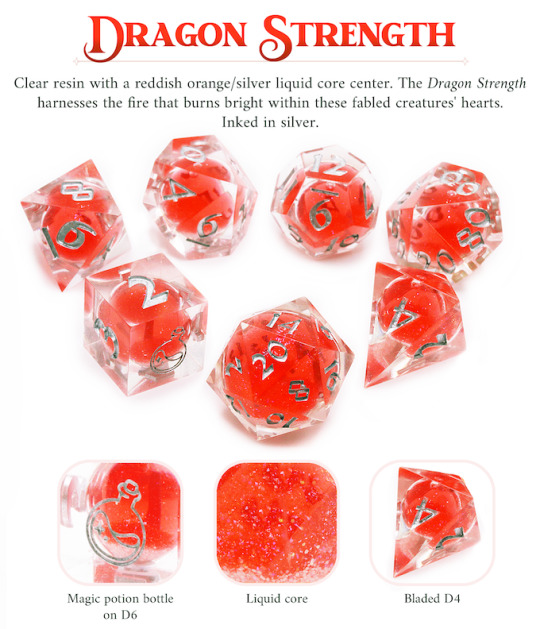
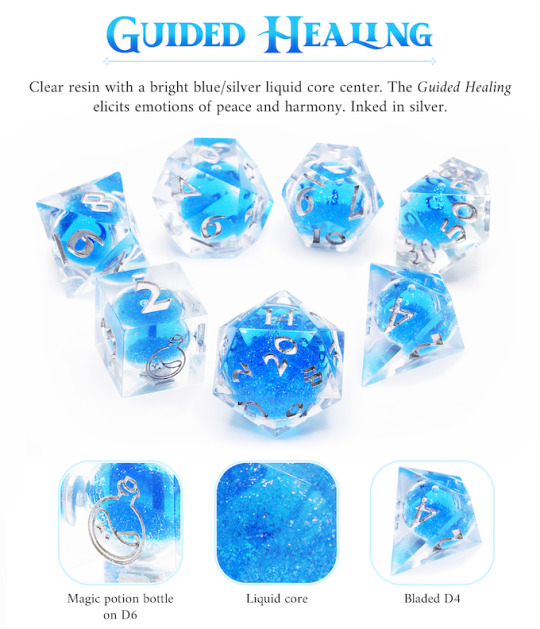
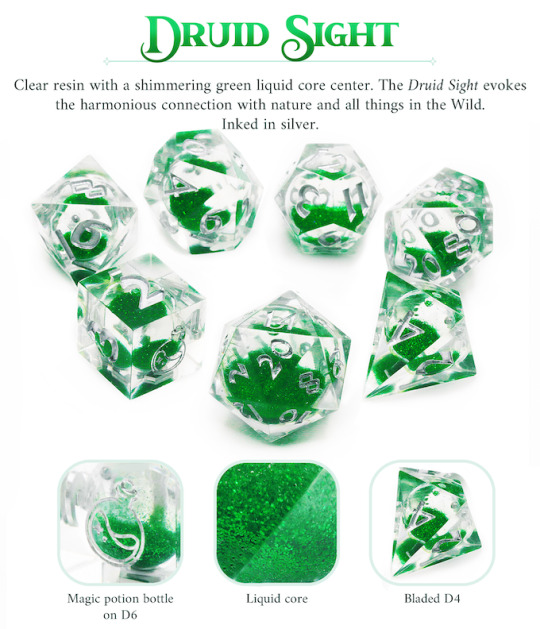
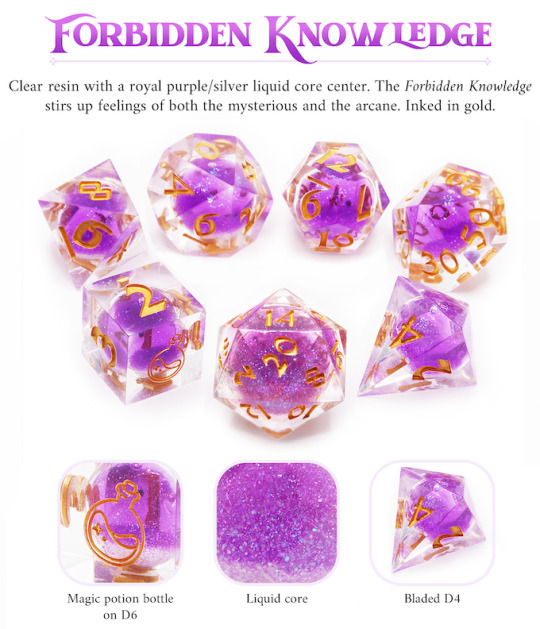
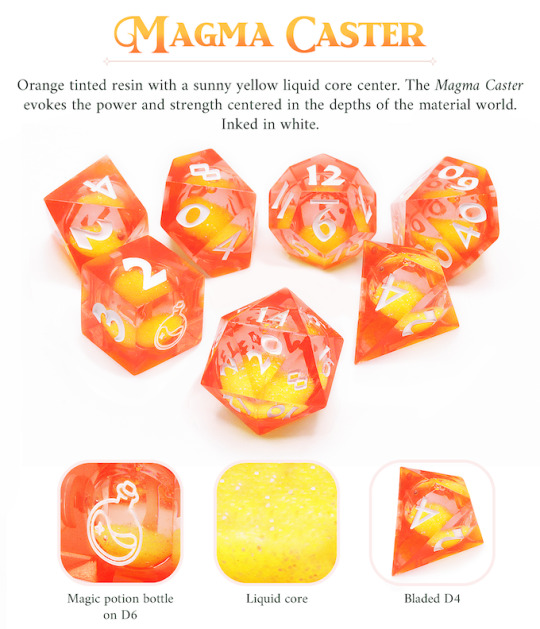
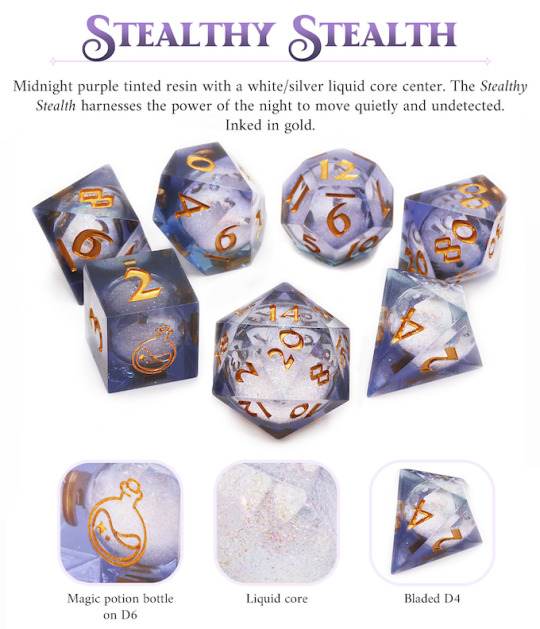
Our latest Kickstarter is now live!
Magic Potion Dice
Shimmering Liquid Core Dice Sets -- Bring Amazing Dice to Your Gaming Table
#dnd dice#rpg dice#dungeons and dragons#dice#dnd stuff#polyhedral dice#dark elf dice#d20#dice collection#cool dice#kickstartercampaign#kickstarter#liquid core dice#liquid dice#liquid d20#tabletop gamers#geekystuff#geeky things#nerdy things#ttrpg stuff#ttrpg#ttrpg community#dice goblin#dice hoard#dice hoarder#nerdystuff
169 notes
·
View notes
Text

Loved shopping board games and checking out all those miniatures at Strategicon: Gateway 2024!
#strategicon#strategicon 2024#strategicon gateway#strategicon gateway 2024#gateway#gateway 2024#board games#tabletop games#tabletop gamers#miniatures#miniature painting#miniature games#games#gamers#warhammer#warhammer 40k#warhammer 4000#dungeons & dragons#d&d#dnd#geeks#nerds#board game conventions#ttrpg
18 notes
·
View notes
Text

𝐓𝐫𝐮𝐬𝐭 𝐧𝐨 𝐨𝐧𝐞! 👀 👀 👀
#dungeons & dragons#dungeons and dragons#dungeons & dragons 5e#dungeons and dragons 5e#d&d#d&d 5e#dnd#dnd 5e#ttrpg#tabletop roleplaying games#tabletop roleplaying#star wars#anakin skywalker#anakin#padme amidala#padme#anakin and padme#meme#memes#d&d memes#dnd memes#star wars memes#funny#lol#comedy#gaming#gamers#games#fantastic tales of adventure#insight
350 notes
·
View notes
Text

Once Little Soldier and Phoenix went belly up in 1981, Lou Zocchi’s Gamescience bought the “Book of” series. I believe either dead stock or reprints of Monsters and Demons came out with Gamescience branding. Later, all six were collected in this, The Fantasy Gamer’s Compendium (1983).
I have seen the digest versions of three of these in the wild (for frankly bonkers prices): Book of Shamans, Book of Treasure and Book of Sorcery. Shamans is a whole new class, complete with a custom spell list, that is framed around accessing the spirit world in a way that reflects I guess broad assumptions about tribal magical systems. Its OK! Treasure is what you’d expect, a collection of magic items pulled from myth and legend in the first part and from genre fiction in the second. It is pretty good! Sorcery is an interesting, if slightly unwieldy reconfiguration of the magic user class, explicitly arranged around demonology and pulp notions of Western occult traditions. Basically, it’s intended to provide mechanics that allow a class to summon all the folks listed out in Book of Demons. It also has a collection of occult-themed magic items, like the Hand of Glory, that I find delightful. That’s probably the most useful thing for me, personally, in the whole “Book of” series.
The last Book collected here is the Book of Mystery, which I am not sure ever saw print as a standalone Little Soldier product. It presents a new class (Lord of Mystery), the new skill system those characters use, and an organization they belong to, which safeguards high science for a time when humanity is ready for it (the Lords of Mystery are descended from the original humans, who crashed here [wherever that is] in a colony ship millennia ago). Many of the classes skills are trained and require quests. They seem to get access to a lot of abilities. It seems like a pain in the butt, but an interesting one, almost like a more monastic version of Dave Hargrave’s Techno class from Arduin.
#tabletop rpg#roleplaying game#dungeons & dragons#rpg#d&d#ttrpg#Game Science#Fantasy Gamer Compendium
71 notes
·
View notes
Text

[Ravnica Battlemap]Judith's Secret Club 32x56
Hidden deep within the chaotic labyrinth of Rix Maadi lies Judith’s Secret Club, a forbidden sanctuary of luxury and bloodshed, crafted for the elite of the Cult of Rakdos to indulge in their twisted pursuit of pain and pleasure. The air is thick with the scent of sulfur and fresh blood, as dim flames leap from braziers placed at the center of the room, casting flickering shadows over the blood-red couches and heavy crimson curtains. These curtains not only muffle the cacophony of the outside halls but also provide an air of mystery and belonging for the audience within.
More variations of this map:
#dungeonsanddragons#rpg#d20#roleplay#nerd#geek#dnd5e#roleplayinggame#tabletopgames#dungeonmaster#gaming#tabletopgaming#rollordie#nerdlife#geekingout#campaignlife#fantasy#maps#rollthedice#minis#5thedition#pathfinder#gamer#dadjokes#tabletop#tokenvault#roll20#foundryvtt#dndtokens#dndart
27 notes
·
View notes
Text
Kids Play TTRPGs
There are plenty of people who started playing D&D or other TTRPGs as kids. Heck, imaginative play (which all kids engage in on some level and in some manner) is central to what TTRPGs do. Roleplaying is a critical part of developing your child self as a person!
So what's the benefit of giving kids a rule-bound system like D&D, Quest, or Kids on Bikes? Why should kids play TTRPGs and not just make-believe?
TTRPGs teach boundaries.
Some of this depends on how a particular group runs, but a healthy TTRPG group teaches kids where boundaries are and how to respect them.
This can show up in lots of ways.
letting dice determine success
working within the limitations of a class, feature, or spell description
avoiding upsetting or scary topics, as requested by a player
offering trigger warnings and safety tools
accepting when a GM says no
respecting when another player says no
Some of those things are organic to telling a story together. Some of them are brought in to keep the game fun for everyone, like safety tools. All of these examples—and more!—help kids practice boundaries one step removed from real life, where things are a bit harder.
TTRPGS provide escape.
As adults, we think of TTRPGs as escape from the crushing reality we live in. We can free ourselves from the news cycle or our social media feeds for a few hours and pretend we live in a world where our actions are world-changing (and I'm talking saving-the-world-from-evil-powers world-changing).
Kids need escape too! Not so that they're living outside of the world, but so they can practice the skills they need to live within it.
It's way easier to advocate for your PC who's scared of creepy crawlies than it is to admit your skin crawls around your buddy's pet snake.
Kids can practice all sorts of social skills in the freedom of TTRPGs because those games provide escape and distance from the world they actually inhabit. For example:
admitting fears
facing conflict
handling disagreement
learning about themselves
experimenting with consequences (from stealing a loaf of bread to going full murderhobo at times)
setting goals and making plans
Games are low stakes ways for all of us to practice tough conversations or new social skills. Why not let kids get a leg up by teaching them to role play?
TTRPGs build confidence.
Practice makes perfect, and TTRPGs are a great place to practice your sense of self (while inhabiting a character).
As kids get more confident roleplaying their PC, they learn gain confidence in who they are and speaking from that place.
This doesn't look like adults might expect though. We think of the bard suddenly offering a grand speech, or the shy loner forging bonds with the rest of the party.
Kids gaining confidence might not look like what you expect (more on that another time), but TTRPGs help clear the path for confident, empowered kids. And that's something worth making space for!
#ttrpgs#ttrpgkids#kids play ttrpgs#gamer kids#growing up with ttrpgs#growing up with dnd#confidence#social skills#boundaries#dnd#D&D#roleplaying#roleplaying games#tabletop#ttrpg community#make believe#make believe is for kids too
203 notes
·
View notes
Text
*First time playing DND* ... I'm all in
DM: that's not-
*Pushing all my chips into the middle of the table*
DM: where did you get those
33 notes
·
View notes
Text




FIREHEART - 8 piece set
This set is inspired by Aelin Ashryver Galathynius from the book series Throne of Glass
#d&d dice#dice#dnd dice#resin dice#8 piece set#gold foil#dice set#dungeons and dragons#TTRPG Dice#Dice Goblin#Axolotl Dice#D&D Dice Set#5E D&D#5e DnD#dice making#gamer accessories#roleplaying games#geek crafts#nerd culture#gamers on tumblr#d&d community#crafting dice#dice collector#gaming gear#dice for D&D#tabletop gaming#polyhedral dice#green dice#throne of glass inspired#throne of glass
20 notes
·
View notes
Photo
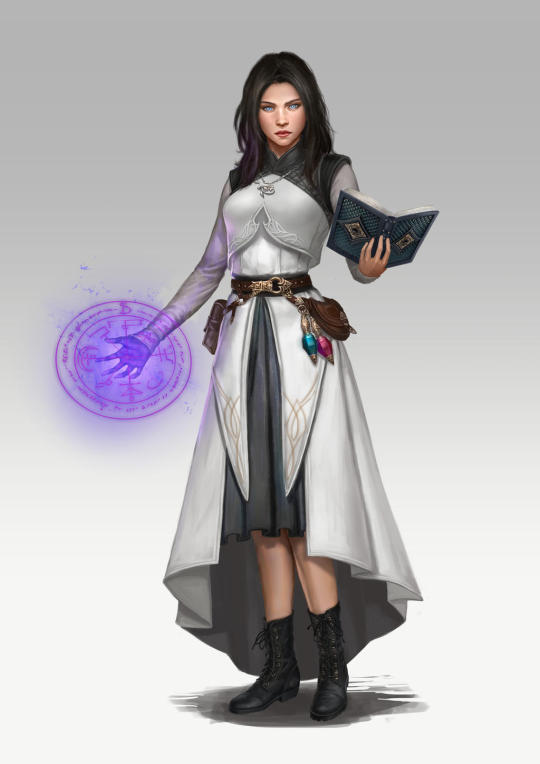
white wizard Raven by macarious
Check out Tabletop Gaming Resources for more art, tips, and tools for your game!
#tabletop rpg#rpg#tabletop gaming#pen & paper#roleplayer#roleplaying gamer#games#inspiration#pen & paper games#dnd#d&d#pathfinder#dungeons & dragons#Dungeons and Dragons#fantasy rpg#npc#female caster#wizard#book#spell
387 notes
·
View notes
Text

Continuing with the Transformers Contact Builds, here is another NPC from my current campaign: Brainstorm!
This is unofficial, fan-made content using the #Transformers #Essence20 #rpg by Renegade Games Renegade Game Studios
#transformers#cybertron#lost light#arcana#brainstorm#idw#dreamwave#headmaster#robots in disguise#maccadam#transformers g1#rpg#tabletop#gamer#gaming#renegade games studios#essence20 rpg#essence20
26 notes
·
View notes
Text
a good thing to remember as a dm: try not to punish your players, just give them the consequences of their actions, whether those consequences are good or bad
26 notes
·
View notes
Text
youtube
Over the past month, I've released a lot of Top 10 Category Videos, and it all culminates in this video! I've done Top 10 videos for Party Games, Cooperative Games, Family Games, Small Box Games, Card Games, Strategy Games, Unique Games, and Two-Player Games. This video is the best of the best of them. No categories, just my personal favorite 10 games.
#board games#board game geek#game night#tabletop games#gamer#grant's game recs#board game#board gamer#games#Youtube
5 notes
·
View notes
Text

The Kickstarter for my copy of 'HENSHIN! A Sentai RPG: Guest Star Expansion' from Cave of Monsters Games came in last week!
Also picked up the main TTRPG book with the 'Rider Konchu' (Kamen Rider) and '3 Minutes' (Ultra Man) books.
#henshin#henshin a sentai rpg#henshin a sentai rpg guest stars expansion#rider konchu#3 minutes#cave of monsters games#ttrpg#indie ttrpg#tabletop roleplaying games#games#gamers#geeks#nerds#sentai#power rangers
14 notes
·
View notes
Text
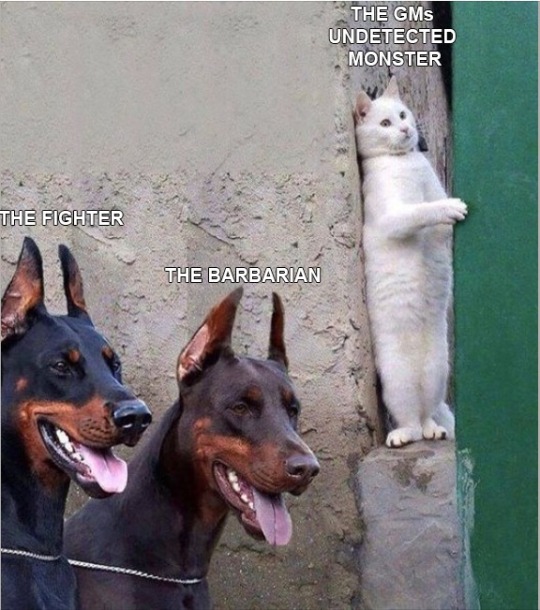
When those PCs have low perception scores...
#dungeons & dragons#dungeons and dragons#dnd#dnd 5e#d&d 5e#pathfinder#pathfinder 2e#pf#pf2e#ttrpg#low perception#tabletop roleplaying games#fantastic tales of adventure#dnd memes#pathfinder memes#cats#dogs#memes#meme#funny#lol#comedy#gamers#gaming
291 notes
·
View notes
Text

From the back cover of The Ultimate Powers Book (1986): “Two-hundred and ninety-three powers times five ranges times eighteen power lives equals—26,370 discrete powers!” Now, TSR products, particularly for the Marvel Super Heroes line, are prone to exaggerating, and it is true that the claim of nearly 27,000 discrete powers is a bit much, but that doesn’t really diminish the monstrous utility of the book.
The core box for Marvel Super Heroes didn’t have character creation at all. The idea was that players would just take the roles of established Marvel characters. The Advanced box introduced character creation, but the list of powers was limited and the system generally produced characters that were underpowered compared to those from the comics. Ultimate Powers hopes to change that, with a brand new creation system that aims to be flexible enough to create characters from the cosmic level on down to regular folks. It builds off a robust pool of “form” templates — cyborg, induced mutant, demon, etc — and then builds up, next with the origin of powers, abilities, weaknesses, the actual powers (arranged by type) and so on. The powers themselves allow for a good amount of detail and fine tuning — not so much as Champions, but enough to feel bespoke.
Its rare, I think, for this kind of sourcebook to totally transform its game, but that is exactly what Ultimate Powers does — playing these characters is its own sort of experience, different from the basic or advanced game. Not bad for a 96-page book! Well, a 96-page book with three columns, small text and no pictures. Dense!
#RPG#TTRPG#Tabletop RPG#roleplaying game#D&D#Dungeons & Dragons#Marvel Super Heroes#Gamers Handbook to the Marvel Universe#Marvel Universe#Ultimate Powers Book
87 notes
·
View notes
Text
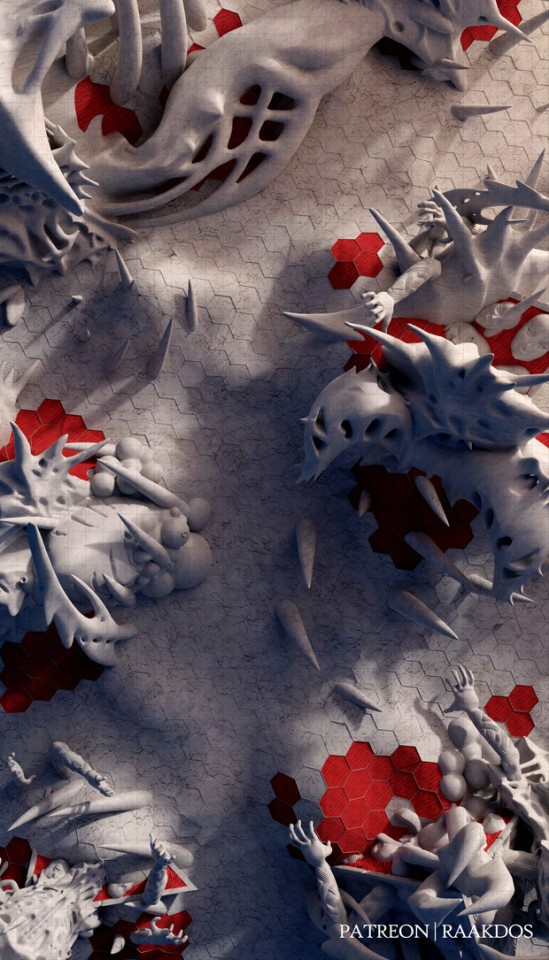
Phyrexia encounter #004 Path to the Norn's Palace
The Fair Basilica, a white-aligned sphere built in the image of Elesh Norn, decorated with statues and monuments to her. It contains Norn's throne room, though she now resides in the plane's second layer and designates the unification of the plane to Atraxa in her stead. Though no light from the plane's suns can reach this layer, its structures generate their light; the layer's walls, composed of ossified Phyrexian corpses of those Norn deemed perfect, glow white, while crimson capillaries etched into its marble-esque floor glow blood-red.
More variations of this map:
#dungeonsanddragons#rpg#d20#roleplay#nerd#geek#dnd5e#roleplayinggame#tabletopgames#dungeonmaster#gaming#tabletopgaming#rollordie#nerdlife#geekingout#campaignlife#fantasy#maps#rollthedice#minis#5thedition#pathfinder#gamer#dadjokes#tabletop#tokenvault#roll20#foundryvtt#dndtokens#dndart
44 notes
·
View notes